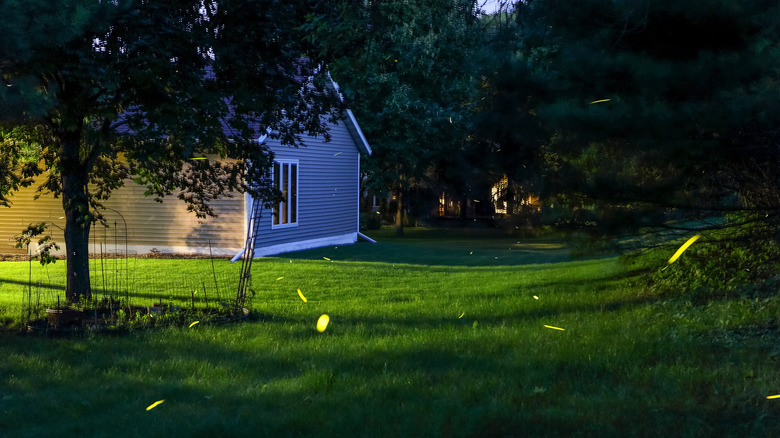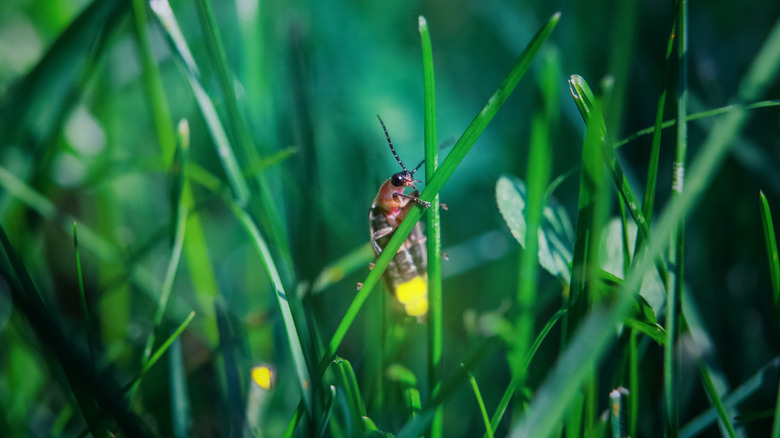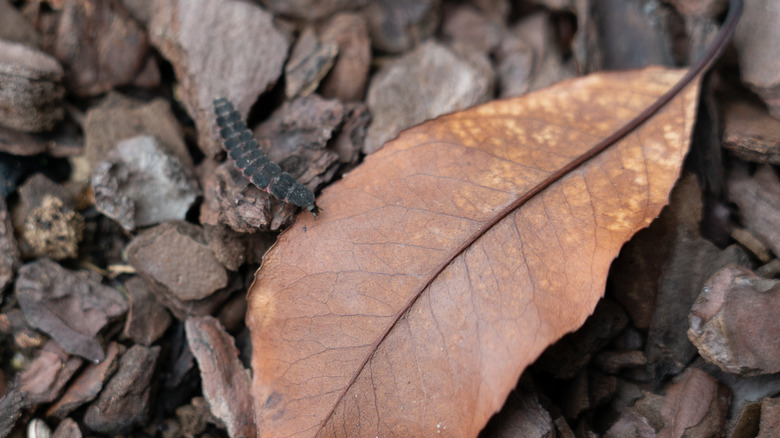Why You Might Be Seeing Less And Less Fireflies In Your Yard (And How To Help)
Fireflies are as old as the dinosaurs, but the 21st century may prove their undoing. Electric illumination, urban sprawl, and a warming world are all bringing habitat changes these little lightning bugs can't adapt to fast enough. Magical memories of clouds of bright-bummed insects erupting from a grassy backyard on a steamy early summer evening are quickly becoming just that in many parts of the U.S. — a tale passed from parent to child about an experience lost to time. You can help these magical wee creatures hold on a bit longer by modifying your backyard: things like reducing light pollution, creating water features, and planting native species all offer support.
Fireflies are in the Lampyridae family, and there are anywhere from 150 to 170 species of the bug found across the U.S., mostly across three groups: Photurinae, Lampryinae, and Otetrinae. Contrary to their common name, these glowing insects are winged beetles rather than flies. They inhabit swampy roadsides, woodlands, and other open areas. If you're lucky, that includes your backyard. Probably the most notable feature of the firefly is its bioluminescent rear end. Each species boasts a differently hued glow — from yellow to green to orange. Experts also distinguish between species based on flash patterns and flight paths. Firefly larvae — sometimes called nymphs — are insectivorous, making them a helpful addition to your garden.
Fireflies under threat
In the U.S. alone, at least 18 species are dangerously close to extinction. Globally, it's such an area for concern that the International Union for Conservation of Nature (IUCN) set up a Firefly Specialist Group to assess species for addition to the Red List of Threatened Species.
Climate change is altering traditional weather patterns, causing the premature arrival of warm summer weather. This fools fireflies into emerging from their adolescent life underground earlier than usual. That's great for those of us eagerly waiting to enjoy the flashy show the adult insects put on, but it disrupts the beetle's lifecycle.
Additionally, fireflies prefer humid marshes. Their numbers decline as those habitats are lost to urban and suburban development. More living and working spaces for humans means more light pollution; fireflies are sensitive to artificial light because it disrupts their communication ability. They're also sensitive to the many pesticides used in agricultural production.
Lightening bug enthusiasts with a decently sized backyard can do a lot to help these illuminating creatures survive ... and even thrive. Start by finding some way to retain moisture in your garden. Let the grass grow tall — it keeps water in the soil. Alternatively, set your mower to its highest blade setting or mow less often. If you want to go big with your efforts, build a pond or stream. You'll encourage far more than fireflies. Depending on where you live, everything from dragonflies to frogs and turtles could take up residence.
Ways to help
Planting trees, especially pine trees, and native grasses like Pennsylvania sedge and Little Bluestem recreate the environment egg-laying adult fireflies prefer. Egg-laying fireflies also gravitate toward the damp, regularly disturbed soil of vegetable beds. To reduce light pollution, turn off outside lights, install motion sensors, and draw your curtains to block indoor light. If you must install outdoor lights, say, along a steep garden path, use dim, warm-toned bulbs.
Leave those log and leaf piles — the hidden wildlife dangers of raking up fallen leaves in your yard include destroying safe habitats for firefly larvae to develop. Forgo the bug zappers and professional mosquito spraying services — try an enclosed porch or veranda instead. Use natural fertilizers (for example, food scraps can be used to fertilize your garden), and stop using pesticides to limit the chemicals you add to your local environment. Firefly larvae act like a pesticide because they prey on other insects; encouraging diversity benefits everyone!
Stick to walkways in the garden whenever possible to avoid squishing eggs and larvae underfoot, and share strategies with your neighbors to create firefly-friendly corridors. Don't chase or try to catch lightning bugs; encourage any kiddos in your life to enjoy their flashy flying friends from afar. If they're interested in interacting with fireflies, participate in a citizen science project like Firefly Atlas or Mass Audubon's Firefly Watch. These projects ask people to submit firefly sightings to build a better picture of insect populations across North America.


